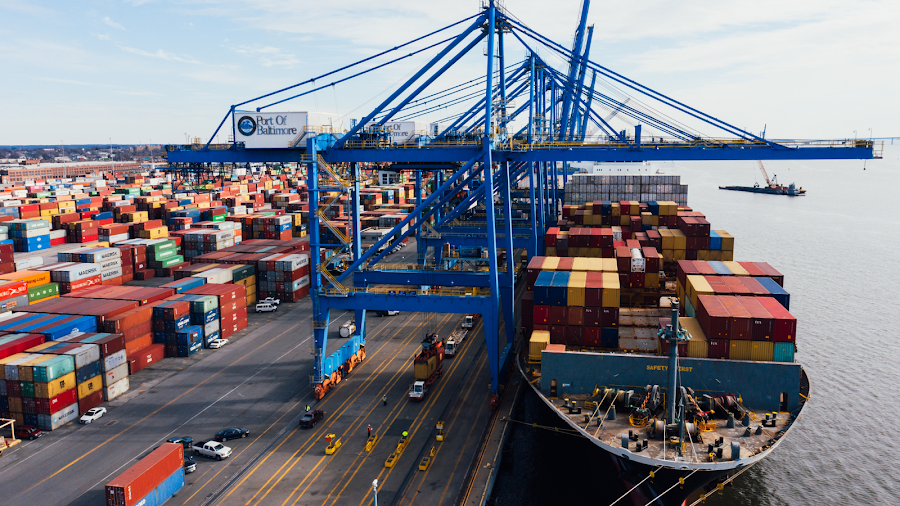
Shipping containers are made to be transported back and forth across oceans carrying the items that make life easier. They hold things such as clothing, furniture, brand new computer parts, and just about anything else you can get at your local corner store.
While containers are on the ocean, they face pounding wind and rain, the brightness of direct sunlight, and the unusual snowstorm. How are they able to endure the overwhelming exposure and impact? In this article, we will be answering what steel shipping containers are made out of and more.
To give you a straightforward answer, shipping containers are made of Corten steel which is created and built to withstand everything.
What is Corten Steel?
Corten steel is usually referred to as weathering steel because of its corrosion resistance and durability against the elements. It s distinct from other types of steel because it was designed to minimise the need for painting. Due to its weldability and rust resistance, this material is used by container producers. If paint chips off of the steel, a tiny layer of rust forms on the surface, but it doesn’t penetrate very far into the steel.
When exposed to harsh weather, its chemical composition allows for the early formation of light rust that sticks to the steel’s surface, which may appear counterintuitive. Besides its body frame, Furthermore, Corten steel will almost always be used for shipping container walls, frames, corner castings, and other essential metal components. Thanks to its incredible durability, bridges and towers, chimneys and rail cars, and even outdoor artworks are common places to find objects that are also made out of Corten.
Other components of a shipping container
Since shipping containers must adhere to particular requirements to ensure their longevity as well as the safety of the user and the goods, the majority of them have the same number and type of components.
- Vents
Vents are commonly seen on shipping containers because they allow air to flow in and out, which aids in the regulation of temperature and moisture. Moreover, various metals can be used to make vents, including Corten steel, which is the same material as the containers. Aftermarket vents can also come in a more resilient material such as plastic.
- Corner castings and posts
Corner castings are shipping container corners with twist-lock holes reinforced by a sturdier material. It is possible to link corner castings to other containers or anchor points via twist-lock connections. They’re strong enough for crane rigging even when fully loaded. Designed to withstand the weight of a full shipment of goods, these corner castings and posts are capable of being rigged to cranes.
- Cross members
Container floors are supported by cross members, also known as joists and beams, which cross over each other. Due to the cross members, many shipping container buildings don’t require foundations because they can be lifted off the ground. Moisture cannot enter the container from the bottom due to the space created by the cross members between the ground and the flooring.
- Cargo doors and headers
It’s common to see two steel doors on one end of a storage container as its cargo doors. Two steel doors split down the middle of most shipping containers, making them easier to operate. Many locking and securing systems can be found on most of these, making them incredibly durable and safe. Headers and sills are standard on all shipping containers. Furthermore, headers and threshold sills are the two parts of a shipping container’s opening that are framed by the top of the container.
- Twist locks
Twist locks are standard on all shipping containers designed to be attached. Depending on your requirements, these can be used to securely fasten shipping containers to one another or other anchor points. These locks function by being inserted into corner castings and then pivoting to a locked position through a lever or other human control.
- Security seals
Numerous transport containers are currently benefitting from security sealing. These are frequently colour-coded and numbered and can be used in conjunction with regular locking systems to maintain the integrity of a shipping container until it reaches its destination. Furthermore, security seals are advantageous because they make it easier to determine whether a shipping container has been opened in advance; there is a problem if the seal is broken.
- Flooring
The great majority of shipping containers will include one or more durable flooring types. Typically, floorings are treated with pesticides and other protective coatings to ensure that they endure a long time and are resistant to insect and rodent damage.
- CSC Plate
CSC is an acronym for The International Convention for Safe Containers. This agreement establishes design requirements for shipping containers to prevent structural failure and safeguard human life. Typically, these plates are attached to either the inner or exterior of a container. The CSC plate placed on the shipping container indicates that it has been inspected by a certified inspector and found to be cargo-worthy and safe.
- Forklift Pockets
Any shipping container intended to be moved will include two forklift pockets or slots along the bottom border of its contour. These pockets enable forklifts to pick up and transport cargo containers – forklift tines are fitted into the pockets when ready. Please keep in mind that not all containers will include forklift pockets.

Choose WA’s Best Container Storage in Bunbury
Whether you are relocating, changing countries, or undertaking a total refurbishment of your property, our container storage in Bunbury can accommodate your furnishings and personal possessions.
We offer a private, secure facility capable of storing a large number of containers, but we also have a crew with years of experience and skill in sea container storage in Bunbury. With over 15 years of experience supporting all of your transportation and storage needs, you can rest assured that you are working with a dependable partner.
